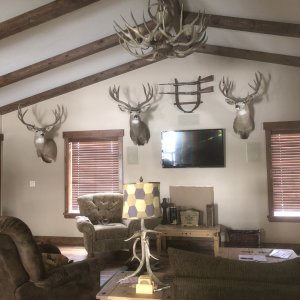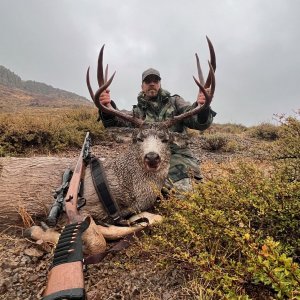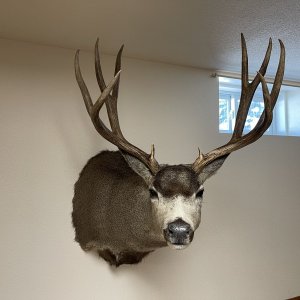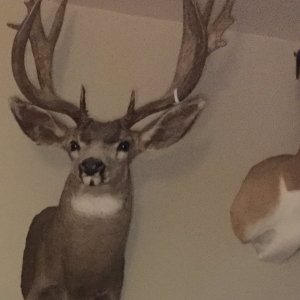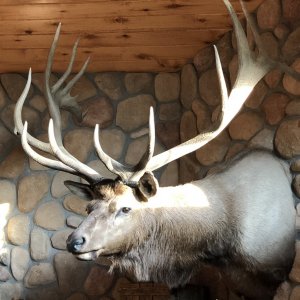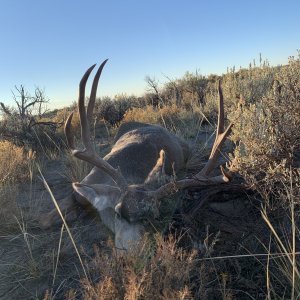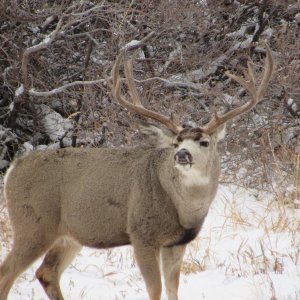HunterHarry
Long Time Member
- Messages
- 5,003
From The Anchorage Daily News....
http://www.adn.com/front/story/934085.html
State: Wolf, bear hunts increasing moose, caribou
Since program began, more than 1,000 wolves and hundreds of black bears have been killed
By Mary Pemberton | The Associated Press
ANCHORAGE - An Alaska wildlife management program in which wolves are shot from low-flying airplanes and black bears are baited and snared is helping to increase the numbers of moose and caribou, state wildlife officials say.
The program has long been the target of wildlife conservation groups who view it as state-sponsored slaughter. Last fall, one of those groups launched an ad criticizing then-Gov. Sarah Palin, the Republican vice-presidential candidate, for expanding the program.
State officials contend the program is aimed at helping rural Alaskans, who rely on hunting to survive and had complained there wasn't enough game to hunt and eat.
The program began under Palin's predecessor, Gov. Frank Murkowski. Private citizens are permitted to shoot wolves from the air or conduct land-and-shoot hunting of wolves in six rural areas of the state.
Since the program began in 2003, over 1,000 wolves and hundreds of black bears have been killed in an effort to drive down the number of predators.
"I think there are some real success stories here," Bruce Bartley, a spokesman for the Alaska Department of Fish and Game, said.
The agency recently released its 2008-09 predation management summary that indicates that moose and caribou numbers in six predator control areas have increased. The agency points to two areas in particular as examples of where the program is showing strong results: the Nelchina Basin area and the southern Alaska Peninsula.
The program is getting substantive results in the McGrath area, where it began in December 2003. Last winter and spring, 28 wolves were killed in the McGrath area. Nineteen were taken under the program and nine were hunted and trapped.
The agency said the moose population there has grown from 2,774 in 2004 to an estimated 5,500 moose now. The goal is to reach 6,000 to 8,000 moose.
"Moose numbers have come up substantially," Bartley said.
In the Nelchina Basin area - one of the more contentious predator control areas because it is accessible to urban hunters from the Anchorage area - 119 wolves were killed. Fifty-five of those were taken under the control program and the other 64 were hunted or trapped.
That, the state said, helped the moose population increase 27 percent. The harvest, meanwhile, went up 18 percent.
The situation is so improved in the Nelchina Basin that for the first time in more than a decade nonresident hunters will be allowed to hunt bull moose.
Bartley said the 50-permit, nonresident hunt should not interfere with the supply of moose for Alaskans because it is being allowed in more remote areas only. Nonresident hunters have been "frozen out" of hunting in that area of the state for years, Bartley said, and there is a benefit to the state to have them in it.
"Everybody loves to beat up on the ugly, old nonresident but the fact is they pay a lot of the game management bills in Alaska," he said.
Critics say the nonresident hunt being allowed in the Nelchina Basin reveals the true intent of predator control in Alaska. They have said the predator control program is nothing more than a front for big game guides who pay big fees to the state and need trophies for their out-of-state clients.
"Predator control programs are simply perpetual killing events designed to give nonresident trophy hunters access to Alaska as a game farm," said John Toppenberg, director of the 1,200-member Alaska Wildlife Alliance, a conservation group.
The program is meant to meet the needs of commercial guides and nonresident trophy hunters - not the subsistence needs of rural Alaskans, he said.
Wade Willis, a former Fish and Game biologist and outspoken critic of the program, agrees. It looks like predator control is never going to end, he said.
"It is a perpetual predator control program, artificial manipulation of the game to create nothing short of a game farm," said Willis, who was formerly associated with Defenders of Wildlife in Alaska.
It is up to the Alaska Board of Game to end predator control, but Bartley said the board likely won't stop intensive management in the control areas anytime soon.
"I think the board wants to see that they do function normally for a number of years in a row," he said.
http://www.adn.com/front/story/934085.html
State: Wolf, bear hunts increasing moose, caribou
Since program began, more than 1,000 wolves and hundreds of black bears have been killed
By Mary Pemberton | The Associated Press
ANCHORAGE - An Alaska wildlife management program in which wolves are shot from low-flying airplanes and black bears are baited and snared is helping to increase the numbers of moose and caribou, state wildlife officials say.
The program has long been the target of wildlife conservation groups who view it as state-sponsored slaughter. Last fall, one of those groups launched an ad criticizing then-Gov. Sarah Palin, the Republican vice-presidential candidate, for expanding the program.
State officials contend the program is aimed at helping rural Alaskans, who rely on hunting to survive and had complained there wasn't enough game to hunt and eat.
The program began under Palin's predecessor, Gov. Frank Murkowski. Private citizens are permitted to shoot wolves from the air or conduct land-and-shoot hunting of wolves in six rural areas of the state.
Since the program began in 2003, over 1,000 wolves and hundreds of black bears have been killed in an effort to drive down the number of predators.
"I think there are some real success stories here," Bruce Bartley, a spokesman for the Alaska Department of Fish and Game, said.
The agency recently released its 2008-09 predation management summary that indicates that moose and caribou numbers in six predator control areas have increased. The agency points to two areas in particular as examples of where the program is showing strong results: the Nelchina Basin area and the southern Alaska Peninsula.
The program is getting substantive results in the McGrath area, where it began in December 2003. Last winter and spring, 28 wolves were killed in the McGrath area. Nineteen were taken under the program and nine were hunted and trapped.
The agency said the moose population there has grown from 2,774 in 2004 to an estimated 5,500 moose now. The goal is to reach 6,000 to 8,000 moose.
"Moose numbers have come up substantially," Bartley said.
In the Nelchina Basin area - one of the more contentious predator control areas because it is accessible to urban hunters from the Anchorage area - 119 wolves were killed. Fifty-five of those were taken under the control program and the other 64 were hunted or trapped.
That, the state said, helped the moose population increase 27 percent. The harvest, meanwhile, went up 18 percent.
The situation is so improved in the Nelchina Basin that for the first time in more than a decade nonresident hunters will be allowed to hunt bull moose.
Bartley said the 50-permit, nonresident hunt should not interfere with the supply of moose for Alaskans because it is being allowed in more remote areas only. Nonresident hunters have been "frozen out" of hunting in that area of the state for years, Bartley said, and there is a benefit to the state to have them in it.
"Everybody loves to beat up on the ugly, old nonresident but the fact is they pay a lot of the game management bills in Alaska," he said.
Critics say the nonresident hunt being allowed in the Nelchina Basin reveals the true intent of predator control in Alaska. They have said the predator control program is nothing more than a front for big game guides who pay big fees to the state and need trophies for their out-of-state clients.
"Predator control programs are simply perpetual killing events designed to give nonresident trophy hunters access to Alaska as a game farm," said John Toppenberg, director of the 1,200-member Alaska Wildlife Alliance, a conservation group.
The program is meant to meet the needs of commercial guides and nonresident trophy hunters - not the subsistence needs of rural Alaskans, he said.
Wade Willis, a former Fish and Game biologist and outspoken critic of the program, agrees. It looks like predator control is never going to end, he said.
"It is a perpetual predator control program, artificial manipulation of the game to create nothing short of a game farm," said Willis, who was formerly associated with Defenders of Wildlife in Alaska.
It is up to the Alaska Board of Game to end predator control, but Bartley said the board likely won't stop intensive management in the control areas anytime soon.
"I think the board wants to see that they do function normally for a number of years in a row," he said.


